We’re always happy to answer our customers emails about our galvanic isolators, but the one question that crops up most of all is “Exactly WHAT does a galvanic isolator do”? Great question. In fact, it’s SUCH a good question that I’m actually going to try to answer it!
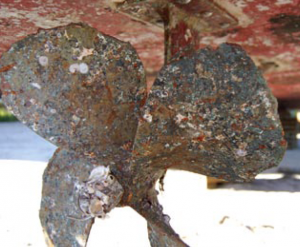 In short, a galvanic isolator prevents corrosion to a boat’s hull and underwater fittings. By underwater fittings, I mean the propeller, stern gear (bearings), on steel boats.
In short, a galvanic isolator prevents corrosion to a boat’s hull and underwater fittings. By underwater fittings, I mean the propeller, stern gear (bearings), on steel boats.
On GRP craft such as cruisers, the isolator protects propellers and outdrives, sometimes known as “Z drives”, not to mention outboard motors if they’re left in the water.
Yes, cruisers need protection against corrosion too!
The type of corrosion I’m referring to is “Galvanic Corrosion”. Galvanic corrosion occurs when a small electrical current flows between the metalwork on a boat, and any other nearby metallic objects.
What might these “metallic objects” be? There are a few obvious answers, such as other boats, and marina pontoons etc., but even if there is no metalwork of any kind nearby, you shouldn’t forget that the bankside and canal bottom are packed full of metals and minerals.
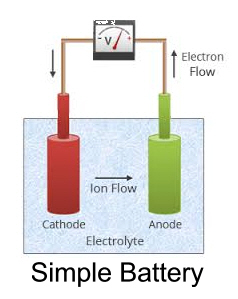
So exactly how does galvanic corrosion work? It’s time to go back to school for a very quick physics lesson.
When two dissimilar metals are immersed in an electrolyte, (a liquid to you and me), a battery is formed.
That’s all your car/leisure/starter battery is…. two different metals swimming in a liquid. Of course, in a car battery, the metals and electrolyte are chosen to give the “best” battery possible.
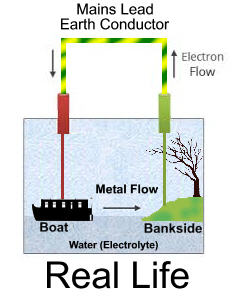 Lesson over… back to our boat-in-the-canal scenario.
Lesson over… back to our boat-in-the-canal scenario.
If you compare the two diagrams, you’ll see that the boats hull and/or fittings act as one plate of a simple battery.
The canal, river or sea water acts as the electrolyte, and the bankside/boats/pontoons act as the other plate.
As if by magic, we have created a simple, and not very efficient battery.
However, at this point, there will be no galvanic corrosion. Why? Because although we have a battery, no electricity can flow – we have nothing connected to our simple battery. As soon as we connect a mains hook-up things change – and not for the better.
When your boat is plugged into a shore hook up, (and ONLY then), an electrical circuit is completed by the earth conductor of the shore connecting cable, and an electrical current starts to flow along the earth conductor, (Green & yellow in the diagram). An electrical current is simply the movement of electrons from one place to another.
As the electrons flow, they take with them tiny, sub-microscopic parts of your boat. They may be tiny…., but there are BILLIONS of them, and over time your boat can lose a very significant amount of its hull and/or fittings. Over time, this can be measured in hundredweights or even tons (or tonnes if you’re feeling European).
There are a few ways to combat this, and you’ll probably already have “Anodes” fitted to your boat.
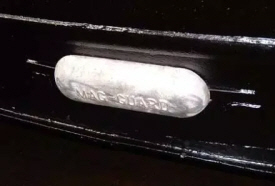
To give anodes their proper name, they’re “Sacrificial Anodes”, in that they sacrifice themselves to save your boat. (Most people don’t have nearly enough anodes fitted to offer proper protection, but that’s another story). From a Galvanic Corrosion perspective, anodes are made from a “softer” metal than your boat, so they give up their molecules more easily.
Because electricity is basically lazy, and prefers to take the path of least resistance, it’s the metal from the anodes that corrodes away first, giving some protection to the hull and it’s fittings.
Unfortunately, anodes DO NOT prevent galvanic corrosion.
Instead, the anodes themselves corrode, and when they’re gone, the corrosion starts on your boat. Also…. And it’s a BIG also… if there are other boats nearby that do not have anodes fitted, your anodes will protect those boats as well as yours. So, as you’d expect, your anodes could corrode twice as fast. Or 3x etc.
Obviously anodes aren’t cheap, and in most cases, they need to be fitted when your boat is out of the water. I’m not saying “Don’t fit anodes”. What I’m saying is that you should consider your anodes an investment, and give them some protection too. A galvanic isolator is sometimes known as a “zinc saver” because anodes usually last a lot longer when a galvanic isolator is fitted.
So just how does a galvanic isolator work?
We’ve seen that your boat and the metalwork that surrounds it form a simple battery, using the canal/sea/river water as an electrolyte. We’ve also seen that an electrical circuit is completed by the earth conductor of your shore connecting cable. So there are FOUR components that must combine to create the problem:
- Boats hull/Metalwork
- Bankside/Marina pontoons/Other boats
- Water (Electrolyte)
- Earth conductor in hook up cable
If we take away any one of the components, the corrosion problem goes away.
In reality, the only practical candidate for removal is the earth conductor in hook up cable. But we can’t take that away safely. In fact, you should NEVER disconnect the earth from your boats hook up lead. To do so could prove FATAL.
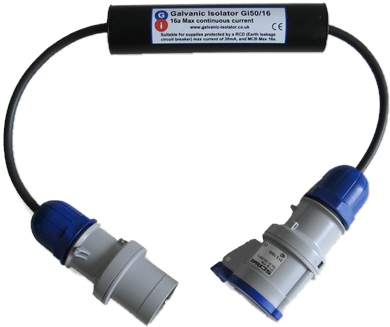 The solution is to insert a Galvanic Isolator in the earth conductor of the hook up cable.
The solution is to insert a Galvanic Isolator in the earth conductor of the hook up cable.
A Galvanic Isolator comprises a semiconductor circuit that breaks the earth circuit for small galvanic corrosion currents, but leaves it completely intact for larger fault currents, which are what the earth conductor is there to protect against. So your boat is protected against both corrosion, and electrical faults. Inserting the galvanic isolator leaves the “battery” that was formed between the boat, bankside & water intact, but breaks the circuit, so no corrosion current can flow. It’s a simple, safe & effective solution that, as you’d expect, will pay for itself in no time at all.
Galvanic Isolators don’t use any electricity, and don’t need scheduled maintenance. They can be fitted either inside the boat or outside.
Time for a shameless plug:
The most popular isolator that we sell is known as a “Plug In Isolator”, and is simply a short (about 1m) extension to your mains hook up cable. All the isolation components are built into the cable, which is just about everything-proof. And the best bit, is that you can fit it yourself in a few seconds – you don’t need the services of an electrician. In fact, you don’t even need a screwdriver.
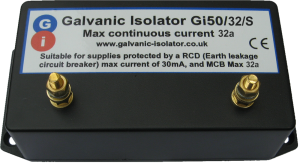 The other type of galvanic isolator is known as a “Stud” or “Wire In” isolator.
The other type of galvanic isolator is known as a “Stud” or “Wire In” isolator.
It works in precisely the same way as a Plug In isolator, except that it’s fitted INSIDE the boat, usually near the maims inlet socket or consumer unit, (fuse board). Fitting this kind of unit is well within the capabilities of many people, but it does involve disconnecting an re-connecting some cables, and unless you’re confident of your abilities, maybe it’s a job for an electrician.
This article wouldn’t be complete without mentioning an alternative to galvanic isolators – the Isolation Transformer.
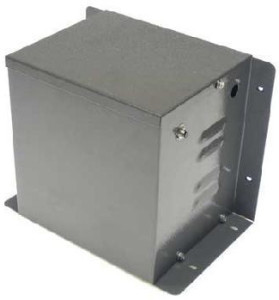
Isolation Transformer (I weigh 65Kg)
Isolation transformers completely disconnect the earth of boats electrics from the earth of the mains supply, leaving it “isolated” from the marina’s mains electric supply, effectively breaking the “corrosion circuit”, as we call it. Correctly installed, they work just as well as a galvanic isolator.
If you consider buying an isolation transformer, you’ll want to be certain that it’s rated for considerably more than the rating of your supply. That’s because certain appliances – usually the ones with motors – can require much more “starting current” than their power ratings suggest. If you choose an isolation transformer, it needs to be able to handle this.
Isolation transformers can be heavy, and expensive – expect to pay in the hundreds of pounds for a decent one. Almost invariably, they will need to be built in to the boat – it’s not really a job for DIY installation. If the terms ”phasing” and “core saturation” aren’t meaningful to you, it’s probably best to consult a specialist before spending your £££.
Also, not all isolation transformers have a 100% duty cycle. For example, a transformer with a 50% duty cycle could overheat if it was used at a high power for a long time, such as for a washing machine, or electric cooking/heating.
When installing an isolation transformer, bear in mind that it will get HOT. You’ll need to provide plenty of ventilation for it.
If reading the last few paragraphs, you’ll have realised that I’m not personally a great fan of isolation transformers. I believe that galvanic isolators are by far the best/cheapest/easiest solution. Does everyone agree?? ‘course not!
I hope that this has been interesting and informative to you. Please don’t hesitate to contact me if I can help you in any way.



